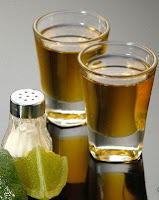The man investigates sources of carbohydrates and sugars to try to obtain a new formulation of an
 alcoholic beverage. We get famous malt distilled spirits (whiskey ) , grapes ( cognac ) to even the Pope ( Vodka ) . No
less striking is perhaps the case of Mexicans , that plant expected at
least get one of the fastest growing beverage business in recent decades
. Know more tequila : its history and manufacture.
alcoholic beverage. We get famous malt distilled spirits (whiskey ) , grapes ( cognac ) to even the Pope ( Vodka ) . No
less striking is perhaps the case of Mexicans , that plant expected at
least get one of the fastest growing beverage business in recent decades
. Know more tequila : its history and manufacture.Mexico agave tequila is a distillate from the municipality of Tequila in the state of Jalisco , Mexico . It is made from fermented and distilled like mezcal , agave juice extracted , in particular the so-called blue agave . It is perhaps the most popular drink and representative of Mexico in the world. To be called tequila, the drink must be made in Mexico and contain at least 51 % of sugars from the agave , although the purest tequilas are 100 % agave . In the mixed tequilas , agave syrup mixed with corn or sugar cane .

Mexicola story tequila Tequila unknown history . Tequila is from Jalisco , according to serious researchers . No municipality can claim to be the " origin of tequila " . Mezcal - Wine is now known as tequila was already produced in the Province of Avalos (now Ciudad Guzman ) since 1616 , as stated in a document from the file of the Archdiocese of Guadalajara. In this region also traded mezcales - agave - between Indians and Spanish , as stated in the document .
However, and for a more accurate historical truth so it's up to the origin of tequila , it should be noted that the tequila or mescal or mezcal was simply an invention of colonial and indigenous , from the moment that it is a distillate . In pre-Hispanic America , distillation was unknown physical process . The Spanish encomenderos
 of the first third of the sixteenth century Indian
labor used for all tasks but this condition is not sufficient to
attribute to the ancient Mexicans the invention of agave spirits . In ancient Mexico , the cooked agave was just a sweet food . The
only pre-Hispanic drink pulque agave was that at some time after the
Conquest was the basis for some Spanish entrepreneurs to prepare a
distillate called " rabbit blood ."
of the first third of the sixteenth century Indian
labor used for all tasks but this condition is not sufficient to
attribute to the ancient Mexicans the invention of agave spirits . In ancient Mexico , the cooked agave was just a sweet food . The
only pre-Hispanic drink pulque agave was that at some time after the
Conquest was the basis for some Spanish entrepreneurs to prepare a
distillate called " rabbit blood ."Its development . The most important unit operations that occur in the process of making Tequila , are:
Jima is separated from the leaves of agave pineapple when it has reached the proper development.
Hydrolysis: The hydrolysis is required for simple sugars (mainly fructose) . For this, it is mainly used a thermal process . At this stage there are many compounds that determine the profile of the final product .
 Extraction
: the sugars contained in the cones of agave must be separated from the
fiber, this extraction is commonly performed with a combination of
wrenching and a train of rolling mills . Currently , it is common to use diffusers that make the operation efficient .
Extraction
: the sugars contained in the cones of agave must be separated from the
fiber, this extraction is commonly performed with a combination of
wrenching and a train of rolling mills . Currently , it is common to use diffusers that make the operation efficient .According to the Official Mexican Standard for Tequila , tequila maker can produce two categories of Tequila , which are 100 % Agave Tequila and Tequila respectively ( up to 49 % with other sugars ) .
Fermentation: in this stage , the sugars present in the must are transformed by the action of yeast , into ethyl alcohol and carbon dioxide .
Distillation: After the fermentation phase , it is necessary to musts distillation process of separating the constituents of the wort.
The product obtained from the first cycle is commonly known as ordinary , this product is subjected to a second cycle or correction finally getting Tequila.
No comments:
Post a Comment